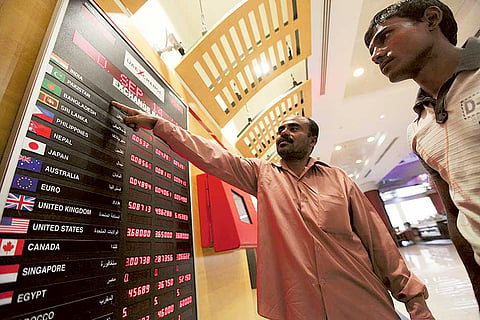Sending money abroad? How to cut your remittance costs in 2025
Digital apps and exchange houses beat banks for cost and speed—if you know where to look

Dubai: Whether you're sending money home, paying overseas school fees, or receiving rent from property abroad, chances are you're using remittance services more than ever. But are you paying too much in the process?
As the demand for faster and cheaper global money transfers rises, so do the options—particularly outside traditional banks. Yet many users, especially in the UAE, still rely on banks without realising how costly that can be.
“Banks remain the most expensive remittance providers globally,” said Matt Simeon, a UAE-based forex analyst. “The average cost of sending $200 (Dh735) via banks rose to nearly 14% in 2024, up from 11.5% a year earlier, according to the World Bank.”
By contrast, money exchange houses charge around 5.4%, while mobile remittance apps are as low as 2.8%—making digital channels significantly more affordable.
Yet despite the savings, mobile apps account for less than 1% of global remittance volumes, mostly because users still trust banks more. But the trade-off is high transaction costs and often poor exchange rates.
Why digital is cheaper (and gaining ground)
The World Bank’s latest data confirms what many already suspect: digital remittances are the future. On average, digital transfers cost 5%, compared to 7.3% for non-digital methods. While banks have made improvements, they remain well above the UN’s 2030 target of 3%.
“Even UAE-based banks rarely offer competitive exchange rates,” noted forex expert Anil Pillai. “You’re essentially paying a premium for convenience and trust.”
Many UAE banks charge between Dh0 to Dh100, not including VAT. Transfers can take up to five business days. In contrast, UAE exchange houses often charge a flat Dh15–Dh20, with faster processing.
How to check if you're getting the best rate
Use tools like the World Bank’s Remittance Prices Worldwide (RPW) tracker to compare providers. It lets you pick by cost, speed, or user ratings.
Also, consider exchange platforms with flat fees, especially if you’re remitting regularly. “If you're sending Dh3,000 monthly, going through a Dh20-fee exchange house means just Dh240 a year. A bank charging Dh50 per transaction? That’s Dh600,” added Simeon.
Tip: Avoid personal visits to the bank—online and app-based transfers are almost always cheaper.
Bottom line:
Remittances are projected to reach $690 billion (Dh2.5 trillion) by 2025, and as new players enter the market, costs are expected to fall. But only for those who compare before they click “send.”
Sign up for the Daily Briefing
Get the latest news and updates straight to your inbox


